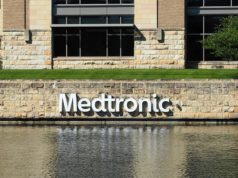The latest information on technological innovations in the rapidly moving field of cardiovascular imaging is set to be showcased at EuroEcho-Imaging 2015.
This conference is the world’s largest on cardiovascular imaging, and is held from the 2nd to the 5th December in Seville, Spain, at the Sevilla Palacio de Congresos (FIBES II).
Innovations in echocardiography, cardiovascular magnetic resonance (CMR), nuclear cardiology and cardiac computed tomography (CT) will be presented and discussed during the meeting, which is the annual congress of the European Association of Cardiovascular Imaging (EAVCI).
“Technological innovations are an important part of EuroEcho-Imaging 2015,” says Bernard Cosyns, Chairperson of the Scientific Programme Committee. “Cutting edge research will be presented on 3D printing in valve disease, robotic echocardiography and fusion imaging. The state of the art in molecular imaging will be revealed using all the imaging modalities to detect subtle pathophysiological processes.”
This year’s themes are “cardiomyopathies” and “early diagnosis of cardiovascular diseases”. Bernard Cosyns comments, “The concept of a ‘damage clock’ is important in cancer patients. Ejection fraction identifies cardiac disease caused by cancer treatment too late but strain imaging detects toxicity early enough to prevent complications. Similarly, CMR detects fibrosis in mitral valve prolapse, enabling a better stratification of sudden cardiac death occurrence before patients become symptomatic.”
The theme of cardiomyopathy will encompass the controversial role of imaging in selecting patients for cardiac resynchronisation therapy, new ways to assess cardiac remodelling, ischaemic disease in women, and how to manage heart failure with preserved ejection fraction. “These are very contentious issues and media representatives can expect to hear the most recent evidence to support each side of the debate,” says Cosyns.
Other disputed subjects will be discussed, such as the use of dyssynchrony imaging to stratify sudden cardiac death risk in ischaemic and non-ischaemic cardiomyopathies. Stress echocardiography is used in valve diseases mostly in Europe but less in the US. The use of echocardiography in cardiac emergencies is also debatable. “There are different schools of thought and both camps will make their case,” says Cosyns. “These exchanges will be a rich source of material on hot topics of interest.”
Around 3,500 attendees from more than 90 countries are expected to attend, including cardiologists, cardiac ultrasonographers, anaesthesiologists, nuclear physicians, paediatric cardiologists, surgeons, scientific engineers, nurses, general practitioners and medical technicians.
During four days of congress there will be more than 155 scientific sessions, and presentation of 900 abstracts and 50 clinical cases.













